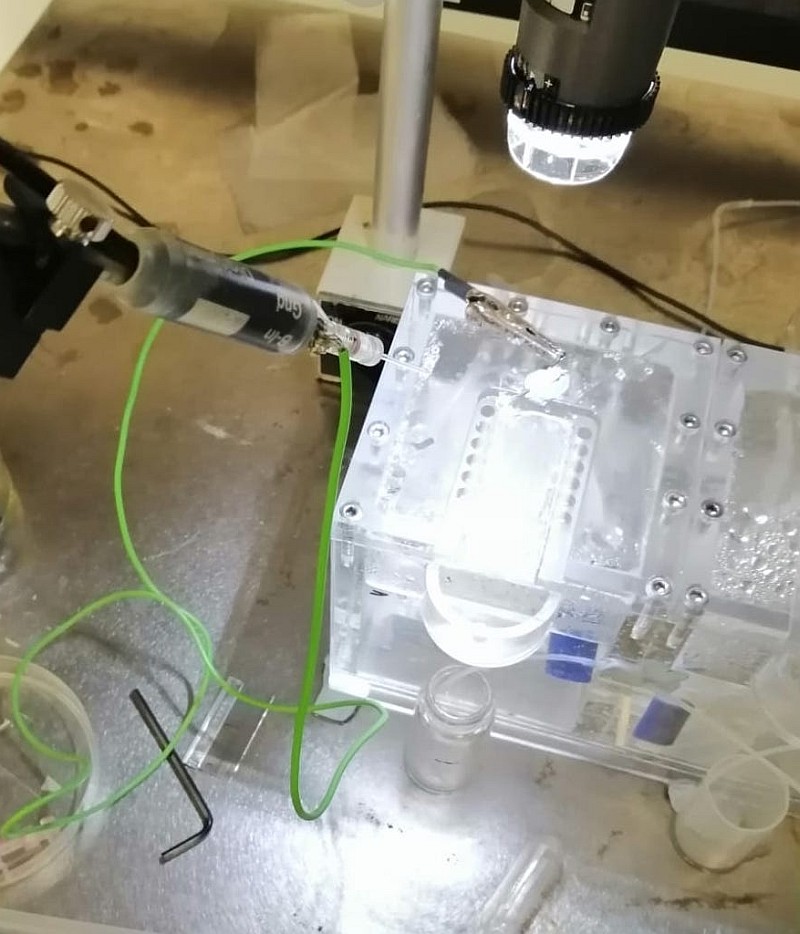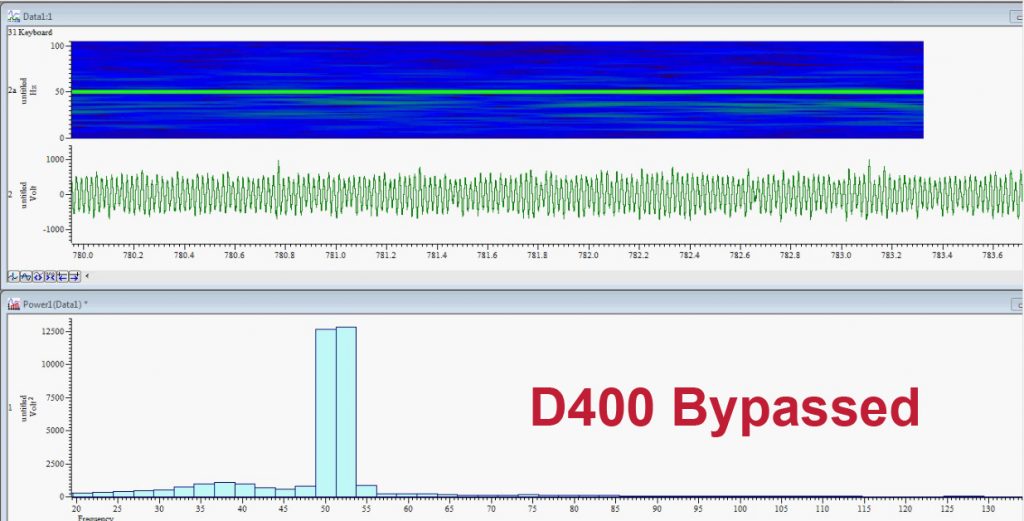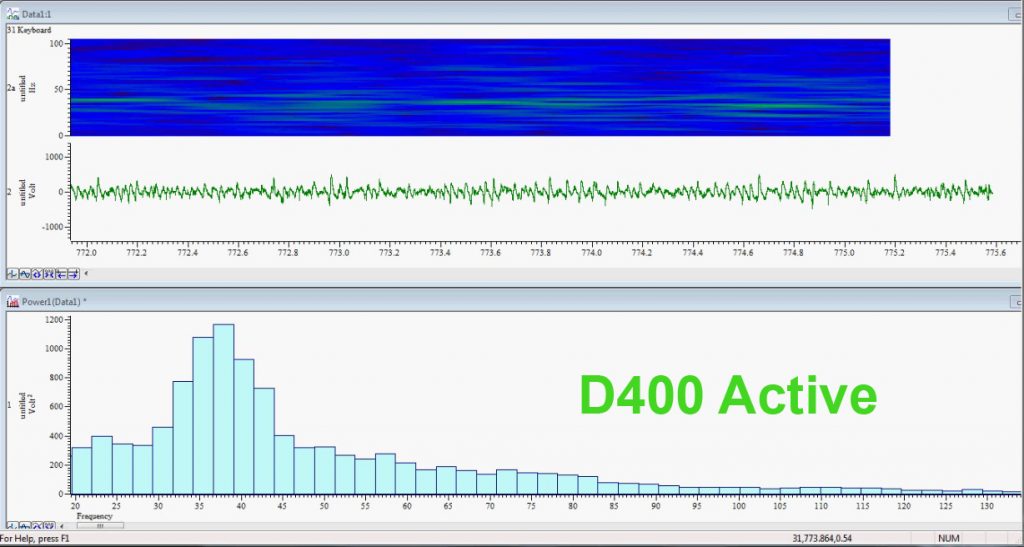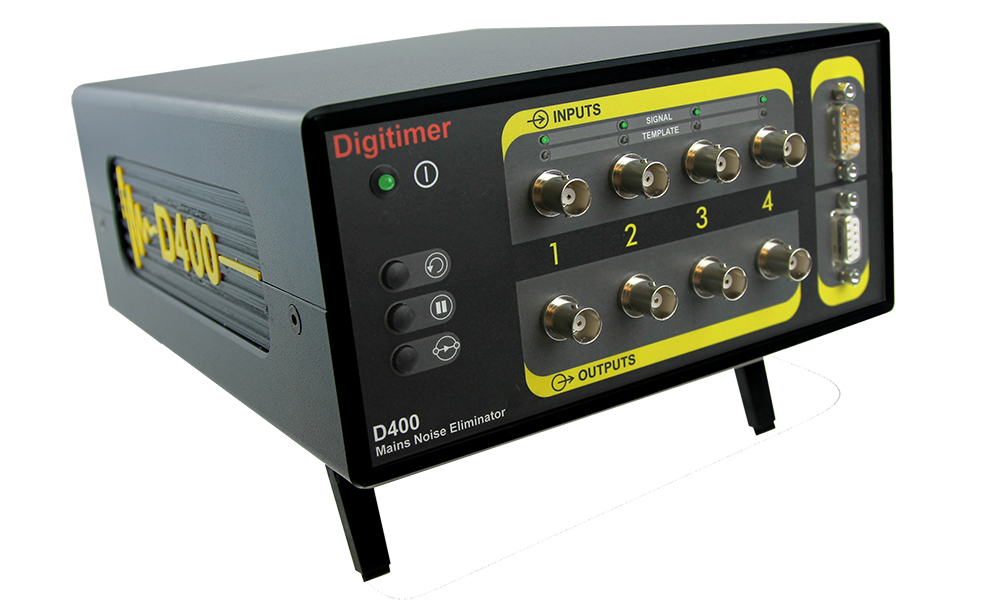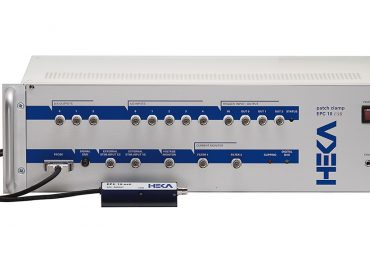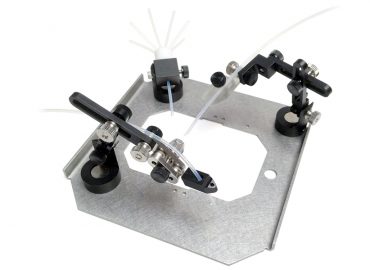D400 Noise Eliminator Case Study
Investigating Gamma Frequency Oscillations in Brain Slices
Is it Time to Ditch the Notch Filter?
The Digitimer D400 Multi-Channel Mains Noise Eliminator was specifically designed to remove mains-related interference from amplified biological signals, but it is perfectly suited to situations where the mains interference lies within the frequency domain of the signal of interest. Under such circumstances a 50Hz or 60Hz notch filter can be used, but because notch filters have no way to discriminate between a biological signal and 50Hz interference, they will cause some signal distortion which can have a deleterious effect on the integrity of an electrophysiological recording, any subsequent analysis and interpretation.
Many researchers now opt to use more selective and less damaging active noise cancellation rather than mains frequency notch filters. This is especially true for physiologists and pharmacologists using electrophysiological methods to investigate rhythmic oscillatory activity in the brain, specifically in the gamma (30-80Hz) bandwidth.
The Case Study
The Neuronal Oscillations and Epilepsy Research Group, based within the Discipline of Physiology in the School of Medicine at Trinity College Dublin, is an example of a laboratory that has a specific interest in gamma oscillatory activity. Led by Professor Mark Cunningham (Ellen Mayston Bates Professor of Neurophysiology of Epilepsy), the group was established in 2018 following his relocation from the UK. We recently invited Prof. Cunningham and his colleagues to evaluate the performance of the Digitimer D400 50/60Hz Noise Eliminator and below we present some of their data, demonstrating the effectiveness of the D400.
The main focus of the laboratory is to understand the basis of neurological and psychiatric disease state at the level of the neuronal microcircuit with a particular focus on physiological and pathophysiological rhythmic activity generated by the brain in certain disease states. The group also has a focus on comparative neurophysiology using alternative species to study the neural substrates of network oscillations.
Prof. Cunningham’s team use a range of electrophysiological approaches in ex vivo brain slices to examine network activity. These techniques include extracellular local field potentials (LFP) recorded with our NeuroLog System, intracellular sharp microelectrodes, whole cell patch clamp and multi-electrode arrays.
The team combines these approaches with pharmacological assays, neuroanatomical studies and behaviour. As mentioned above, one particular form of rhythmic activity they examine in the laboratory is the gamma (30-80 Hz) frequency oscillation. This network rhythm is generated by synaptic interactions between pyramidal neurons and GABAergic interneurons. Previous studies have demonstrated that this rhythm can be recapitulated in vitro using cortical and hippocampal slices with suitable pharmacological manipulation (for e.g., bath application of carbachol).
Prof. Cunningham says “the presence of noise can be detrimental for the studies of oscillations that we conduct in the laboratory. The presence of noise can obfuscate the gamma oscillation and/or interfere with the analysis of this signal. In particular, the presence of power line noise (50 or 60Hz) provides a source electrical noise that can interfere with the signal of interest. Despite best attempts to remove this noise at source, this may not always be possible. Whilst notch filters can be employed they can potentially interfere with gamma activity that overlaps with the notch filter frequency.”
The D400 Reveals Gamma Oscillations Hidden by 50Hz Mains Noise
The screenshots below are taken from an extracellular recording of a cortical brain slice exhibiting oscillatory activity. In the upper panel, strong 50Hz mains interference is shown in raw data (green trace) and identified by the large spike in the power spectrum at 50Hz. In this screenshot, the D400 is in bypass mode, so the input signal passes straight through the D400 and into the data acquisition system with no noise cancellation applied.
In the second screenshot, bypass mode has been turned off and the D400 is actively removing 50Hz mains interference from the signal. The D400 does this by constructing a noise template which is precisely synchronised with the mains frequency and constantly evolves as the characteristics of the noise alter. Mains interference is continuously subtracted from the analogue signal as it passes through the D400. The noise level is clearly reduced in the raw data (green trace) and the power spectrum shows a shift from a large peak at 50Hz, to a smaller peak at 35-40Hz, typical of gamma frequency oscillations.
The recording that these screenshots were taken from is available to view on the Digitimer Youtube channel.
Convenient and Affordable Multi-channel Noise Elimination
Professor Cunningham is no stranger to active mains noise cancellation, having previously used the Quest Scientific Humbug Noise Eliminator, but being a single channel device, it is uneconomic for many labs to purchase several Humbugs for use on a single multi-channel electrophysiology rig. With the launch of two and four channel versions of the Digitimer D400 and the possibility of an eight channel unit at some point in the future, multi-channel noise elimination is now convenient and far more affordable.
Prof. Cunningham concludes that “the Digitimer D400 main noise eliminator is ideal for this task, it allows the experimenter to eliminate noise that filters cannot remove, while maintaining and not altering, as in our case the signal of interest (i.e., gamma rhythms. It can also connect up to 4 amplifiers, which is perfect for our multi-channel rig. This is a powerful and compact device.”
Digitimer would like to express our thanks to Professor Cunningham and his post-graduate student Mr Evgenii Liubishkin for taking the time to evaluate the D400 and for their extensive contribution to this case study article, including photos and data recordings.
If you have any interest in finding out more about the D400 or arranging your own obligation-free trial, please get in touch with Digitimer.
